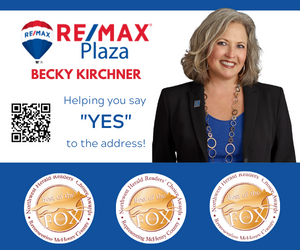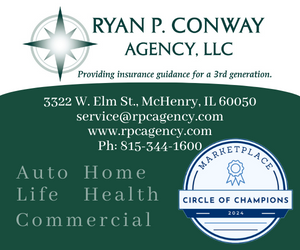Nikki O’Donnell
Nikki is the COO of Frontier Marketing
Target Audiences and Buyer Personas are Both Important for a Successful Marketing Strategy!
Do you know the difference between target audiences and buyer personas? If you’re not familiar with these terms, then you may assume that they’re the same thing. However, this couldn’t be further from the truth.
The truth is these are two distinct parts of creating a marketing strategy. When created together, they can improve your understanding of your customer base.
In this post, we will explain what target audiences and buyer personas are and how they differ. Then we will show you the advantages of using both to determine your marketing strategy. Finally, we will go through the steps on how to build your own.
What is the Difference Between a Target Audience vs. a Buyer Persona?
When we say “target audience vs. buyer persona,” it sounds like the two are in conflict with one another. However, the truth is they work together. You can think of a target audience as a team and a buyer persona as one of the players.
The only difference between them is specificity. When you look at a team, its members have similar interests and are around the same age. However, when you focus on a specific player, that person will have a different background, goals, and personality than other members of the team.
With this in mind, let’s take a closer look at target audiences and buyer personas.
Conversely, a buyer persona is a fictional person within that target audience. You can dive deeper into details about them, including their personality, career, lifestyle and interests.
Below, we take a closer look at the parts that contribute to target audiences and buyer personas.
What is a Target Audience?
When we say “target audience vs. buyer persona,” it sounds like the two are in conflict with one another. However, the truth is they work together. You can think of a target audience as a team and a buyer persona as one of the players.
A target audience is an overview of a business’s customer base. It usually includes information about their age, gender, personality, income and more. We break these traits down into two general categories: demographic traits and psychographic traits.
Looking at each of these traits can give you a better idea of how your target audience thinks and acts. Then you can cater your message to that audience.
Let’s take a closer look at the key components of a target audience:
Demographics
The best way to define your target audience is to start with demographics, which are basic characteristics your customers have in common. This list includes age, gender, education and income.
There are many ways demographic data can help you understand your audience and learn how to market your products to them.
For example, if your target market has a big disposable income, you could use words like high-quality, premium, or unparalleled for your product. If your target market has a smaller income, you might use words like cost-effective, budget, reasonable or inexpensive.
Psychographics
Psychographics go into a little more detail about your target audience. This information includes your audience’s typical personality, lifestyle, interests and values.
With these details, you can step into their shoes and understand what they would want to know about you and your company.
For example, let’s say you own a travel agency. Your target audience would probably have an interest in traveling, be a little more adventurous than the average person, and tend to go on many vacations throughout the year.
What Does a Target Audience Example Look Like?
You can determine a target market by examining historical data, trends and performing some research. This research should involve surveying your customers and looking at your competitors’ customers.
The resulting list should be a breakdown of demographics and behaviors shared by your usual clientele.
Bringing all of the information together, a sample target audience might look like this:
- Gender: Female
- Age: 25-40 years old
- Education: High School and College
- Annual Income: $40,000-$80,000
- Location: Southwest United States
- Interests: Business and Travel
You can also create a couple of target audiences: one for your actual customers and one for the customers you’d like to have.
Whatever you choose to do, your goal is to collect the most prominent attributes shared by your target customers. This broad overview of your audience should inform the marketing tactics you choose for your business.

What is a Buyer Persona?
Buyer personas differ from target audiences in that they are much more focused. Whereas a target audience defines a group of customers, a buyer persona zooms in to look at specific members of that group.
These zoomed-in portraits are archetypes of individual customers. You can use them to glean insights into your customers’ buying process. As a result, they should help you determine how to market to each type of person most effectively.
A great way to distinguish your personas is to come up with an alliterative name that describes each one, such as Turbulent Tim, Caring Claire, Steady Stan, etc. Doing so will make each persona easier to remember when employees think about them in the future.
Each buyer persona should include sections on the person’s background, identifiers, goals and challenges and how your company can help. We’ll take a quick look at what each of those sections should include below.
Background
The background of a buyer persona looks at personal details, such as where they work, what their family looks like and where they live. This is important to include because it’s a quick snapshot of how they might live day-to-day.
It’s important to be as specific as you can when listing these traits because it will help bring the person to life in your mind and the minds of your team.
Identifiers
Identifiers include the interests, values and personality of a buyer persona. Adding these can help you know this persona. In doing so, you can start thinking strategically about what types of messaging would work best for this type of person.
For example, let’s say your buyer persona has a hard time trusting new ideas. In that case, you could try to make your new product more familiar to them by comparing it to something they already know.
Goals/Challenges
So, now that you know who your customer is and what they’re like, let’s take a look at what they need.
Defining your persona’s goals and challenges will help you create targeted marketing that focuses on solving your customers’ problems. It can also help you overcome customer hesitation by speaking directly to their pain points.
What Can You Do?
So, you now know a lot about your buyer persona: who they are, how they act and what they want. Now it’s time to strategize about how to present your product to them in an appealing way.
In this section, you want to answer their questions and concerns and offer options to get them to use your product or service.
Here are some questions to answer as you create this final section:
- How can your company help this buyer persona achieve his or her goals?
- How does your product solve a problem they’re facing?
- What concerns do they have, and how can you make them feel better?
Once you’ve listed out all the above components, you have a valuable buyer persona for your company to use in its marketing efforts!
What Does a Buyer Persona Example Look Like?
As you can see, the buyer persona provides personal, specific insights. It allows the marketer to understand their customers the way they see themselves.
Here’s a short version of what a buyer persona looks like:
- Name: Adventurous Addison
- Background: Addison has time and money to spend and wants to explore the world.
- Demographics: She is in her 30’s, makes $50,000-$60,000 a year and lives in the Southwest United States.
- Identifiers: She is young, passionate, motivated and optimistic, and she finds her information on Facebook and Google.
- Goals: Addison has gone on many solo trips across the continental US and is now in a better position to explore the world. She wants help figuring out how to plan trips outside of her home country.
- Challenges: She is unsure of who to trust but is optimistic about finding the right travel agency.
- What We Can Do: Our travel company can educate her about what we do, how we’re different and what the results will look like.
With this tool, you and your marketing team have a handy reference guide to understand each subset of your customer base. It will allow you to speak to specific people in your marketing rather than a general audience. As a result, your engagement and conversion rates will likely improve over time.

What’s the Relationship Between Target Audiences and Buyer Personas?
Before buyer personas became popular, target audiences were the primary tool for understanding a customer base. However, as buyer personas emerged, target audiences have taken a backseat role, leading many to ask, “Have buyer personas replaced target audiences?”
The answer, of course, is no.
While buyer personas are more popular than target audiences, they shouldn’t replace them. Instead, the two should work together in your marketing plan.
Think of the target audience as your first step. In creating it, you reduce the overall pool of potential buyers down to a more manageable group. From there, you then create buyer personas to segment that group further.
As a result of this process, you will have the target audience to show you your overall base. You will also have your customer personas to help you reach the segments of that base.
Of course, you may not always have the time or resources to create buyer personas. In that case, a target audience makes a decent stand-in in the meantime, providing at least some level of insights.
What are the Advantages of Target Audiences and Buyer Personas?
We know that you want to increase sales for your company. One-size-fits-all marketing will not help you achieve this goal. Instead, you need a target audience and buyer personas to speak directly to the people who are most likely to buy your products and services.
Target audiences and buyer personas can also improve your company in these ways:
- Build Trust and Loyalty – People tend to stand by companies that speak directly to their needs.
- Attract More Valuable Leads – Focusing on the types of people who tend to like your business will keep you from wasting money on irrelevant leads.
- Increased Brand Likability – By personally communicating with customers, you will make your brand more likeable, which can increase referrals.
Clearly, creating buyer personas and target audiences is a worthwhile investment since it can yield valuable leads and lifelong customers!
Target your messages to them. Remember, it takes time to reach your target audience and buyer personas!
Need Help Creating Your Target Audiences or Buyer Personas?
Frontier Marketing helps businesses in Fox Lake, IL, and the Chicagoland region create amazing target audiences and buyer personas. We would love to help you, as well!






















